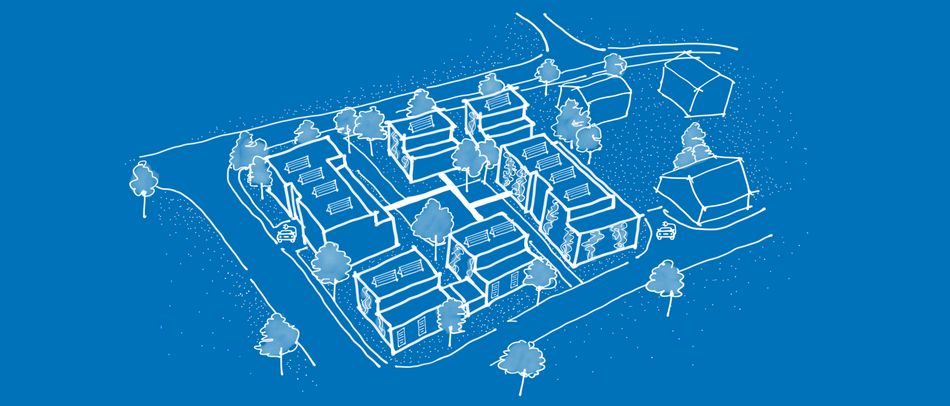Junior research group Cleanvelope - Energy-active building envelopes as a building block for climate-oriented urban development

Building envelopes hold the most important, but largely untapped, potential for generating renewable energy with solar systems in inner cities. At the same time, their greening can contribute to climate adaptation. However, in view of further socio-spatial demands for use, there are conflicts of interest over limited urban areas. The transformation to a climate-neutral and urban-climate-active building stock is a design task that is best achieved on a neighborhood scale in terms of building culture, technology, economics, and the involvement of relevant stakeholders. This also applies to the new active role of energy-generating and energy-storing buildings in the future decentralized energy system. The urban, housing and energy renewal needs of post-war residential neighborhoods open up the opportunity to concretely initiate the transformation process.
The junior research group is investigating design and consideration strategies for effective solar and greening measures in the building envelope and the optimized use of solar energy, load management and storage potentials within the framework of neighborhood energy concepts for typical settlement structures. A CAD-coupled neighborhood model developed for this purpose links the electricity, heat and transport sectors and integrates the simulation of the microclimate. Together with municipalities, implementation strategies are to be developed and the insights gained are to be tested in real case studies.
The results will contribute to a better understanding of climate protection, climate adaptation and grid efficiency contributions. Architects, urban planners and developers of neighborhood concepts receive planning, decision-making and communication support with best-practice examples and holistic evaluation tools. Recommendations for action by local authorities help to exploit the climate potential of building envelopes across the board as part of neighborhood governance.
Research questions
- What contributions can solar and green building envelopes make to climate neutrality, climate adaptation and quality of life in neighborhoods with different settlement structures?
- Which areas are recommended for solar or green activation and how can competing areas be resolved into synergetic combinations or effective coexistence?
- What are the interactions between photovoltaics and greening in the building envelope and the inner-city microclimate?
- What flexibility options and potentials can neighborhood-wide energy management offer to the local interconnection and distribution grid?
- To what extent can neighborhood-wide balancing, building mass as thermal storage, and electric vehicle storage capacities increase local renewable energy use and neighborhood grid serviceability?
- What participation and financing opportunities can neighborhood energy communities and future electricity market design open to improve the feasibility and cost-effectiveness of retrofit concepts?
- How can climate protection and climate adaptation measures be evaluated and weighed in the overall context of neighborhood renewal in early planning phases, taking into account conflicting, multidimensional goals and perspectives of different decision-makers, stakeholders and the common good?
- What options do municipalities have for initiating and managing neighborhood renewal processes in general and climate-oriented measures in particular, and how can internal administrative obstacles be overcome?
Project funding and duration
Bavarian Climate Research Network (bayklif) of the Bavarian State Ministry of Science and the Arts
01.10.2018 - 30.04.2023
Project coordinator
Dr.-Ing. Claudia Hemmerle
Chair of Building Technology and Climate Responsive Design
Technical University of Munich
claudia.hemmerle@tum.de
Phone: +49 89 289-22964
Cooperation partners
- Nuremberg University of Applied Sciences Georg Simon Ohm, Faculty of Architecture, Department of Contstruction and Technology, Prof. Dr.-Ing. Roland Krippner
- Solar Energy Promotion Association Bavaria e. V.
- City of Munich, Department of Urban Planning and Building Regulations, Urban Development Planning HA I/22 - Energy & Climate Protection
- ezro Energy Future Rosenheim (Coordination: Technical University of Applied Sciences Rosenheim)
